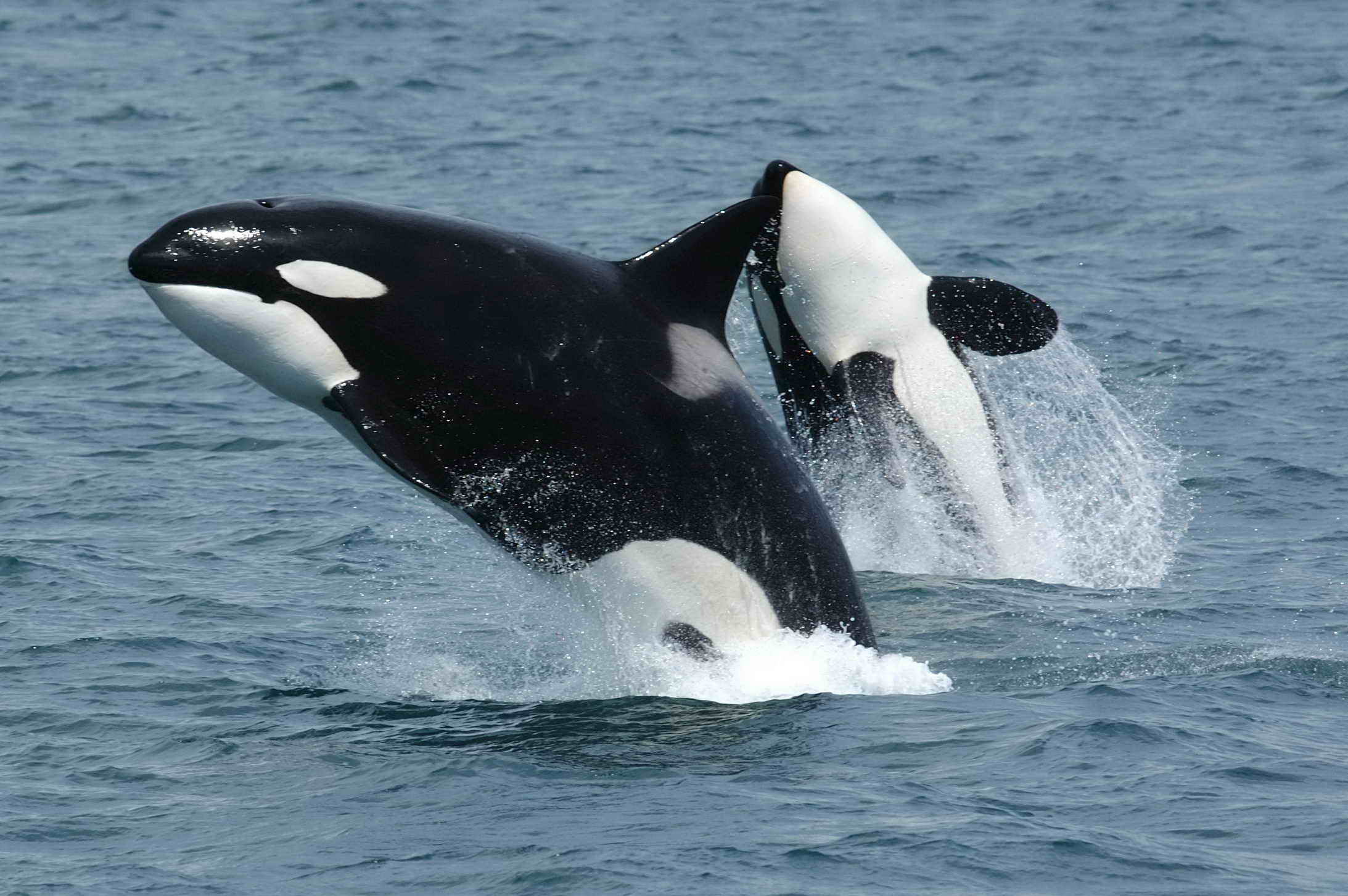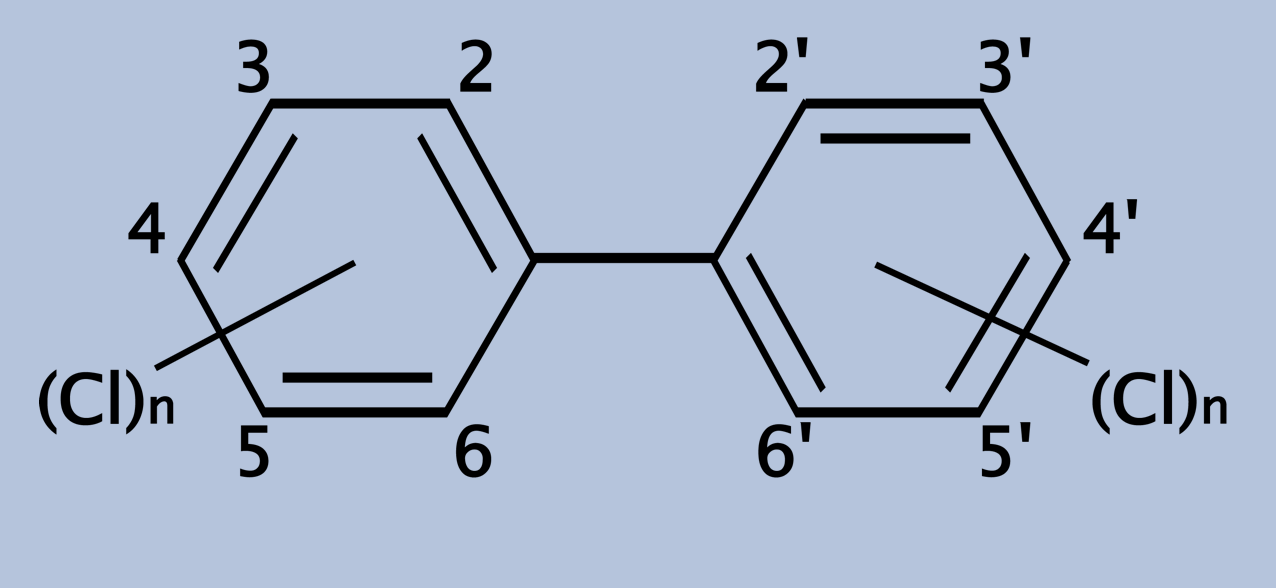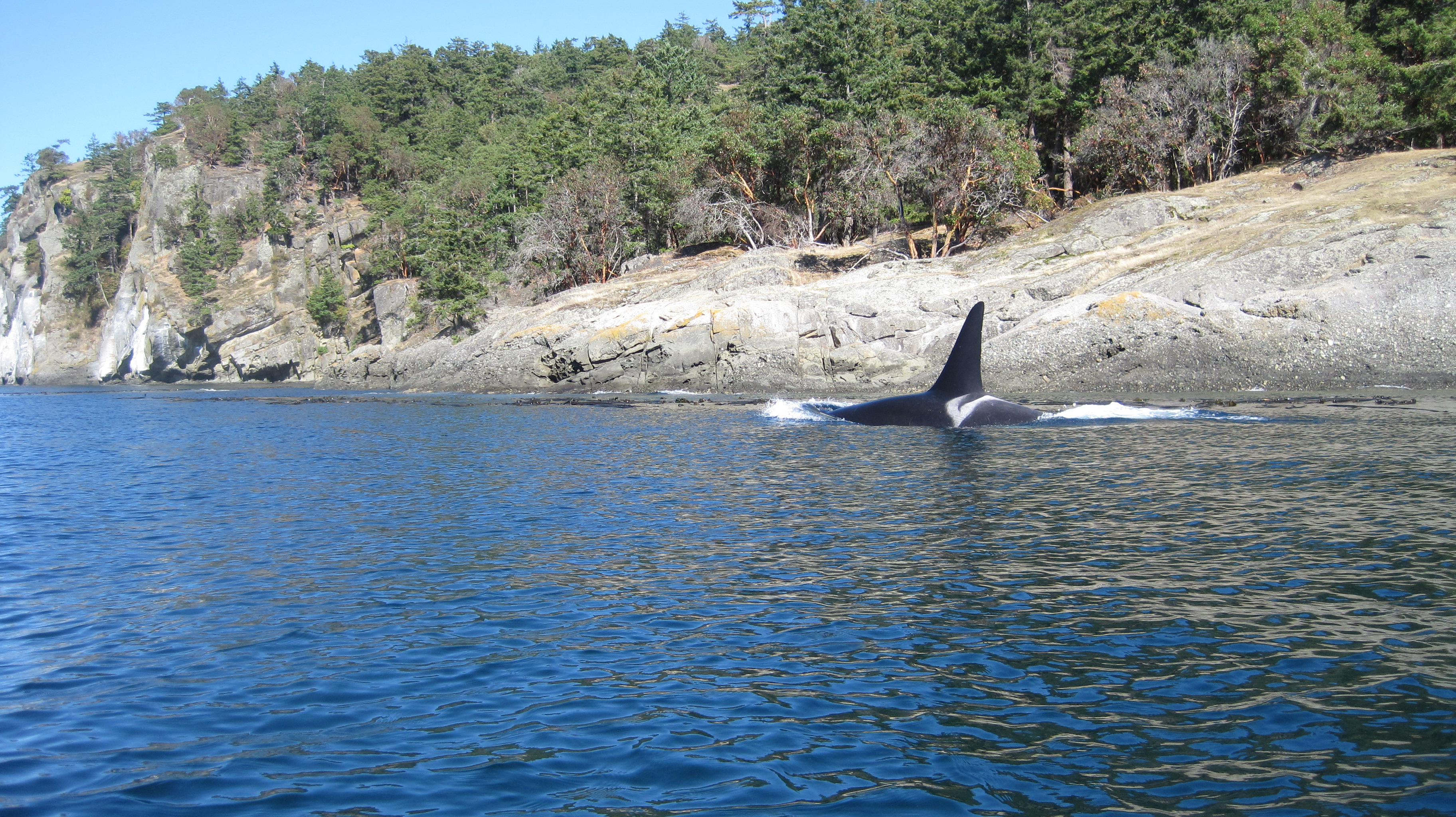Pollution
3.1 Polychlorinated Biphenyls in Waters Present Health Risks for Orcas
Rachel E. J. Dalke
Orcas are just one of the most recent species to be affected by PCBs. What are PCBs and how are they entering water systems? How serious is it and will it affect the overall Orca population?

The killer whale (Orcinus orca) has long been an icon used in promoting environmental movements aimed at protecting Earth’s oceans. Located in few areas, their populations are dwindling and at risk of being extirpated. Numerous studies have been conducted along the west coast of North America to discover why the populations are suffering.1,3,4,5 These studies focus on the three main groups of orcas living in the Northeastern Pacific Ocean: northern residents, southern residents, and transients.1,3,4,5 These whales make their home in waters ranging from the coasts of Oregon to British Columbia, and during migration, their habitat extends down to the southern tip of California.4 Scientists researching their behavior have used data from different groups of whales throughout these three groups and have combined results to make generalizations about their behavior and health. However, due to the limited number of orcas and their restricted habitat, they are difficult to locate and study.
Southern resident whales have been listed as endangered under the U.S. Endangered Species Act (ESA), and both the southern resident and northern resident whales have been listed as endangered under the Canadian Species at Risk Act (SARA).1,3,4,7 Transient whales are listed as threatened under SARA.1,4 A major reason for these classifications is due to contamination from polychlorinated biphenyls (PCBs), which are fat soluble synthetic organic compounds that accumulate in animal fat tissue.9 Killer whales are just one species specifically and heavily impacted by PCB contamination and they are among the most PCB contaminated marine mammals in the world.3

PCBs are synthetic compounds once used in industrial coolants and as insulators for numerous types of electrical equipment, as well as in the making of many plastics.9 The compound itself is composed of two benzene rings and several chlorine atoms (Figure 2).9 In the past, manufacturing plants would purposefully discharge PCB-contaminated waste into nearby waterways, polluting the surrounding environment. Eventually PCB’s hazardous attributes were realized, and their production was banned by the United States Congress in 1979.9 Despite this ban, PCB-containing materials still leak from waste management facilities and other contaminated sites.2 There is significant evidence from numerous studies that indicate PCBs are a significant threat to both humans and wildlife.6
PCBs are “one of the most widely studied environmental contaminants.”9 According to the US Environmental Protection Agency (EPA), PCBs have been demonstrated to cause numerous health problems, including, but not limited to, effects on the immune system, nervous system, endocrine system, and reproductive system.9 The EPA has conducted several studies on the potential effects of PCBs as a carcinogen, and according to their research, “studies in animals provide conclusive evidence that PCBs cause cancer.”9

Along with many other fat soluble synthetic compounds, PCBs are persistent pollutants, and are still present in marine environments, 30 years after being banned.2 Fat soluble toxins are particularly problematic for mammals in higher trophic levels due to bioaccumulation and biomagnification, or the increase in concentration and toxicity as one travels higher up in the food chain.1,3,5,8,9,10 Results from research have shown that elevated PCB concentrations observed in killer whales are likely a result of their ingestion of highly contaminated prey.5 Scientists studying the relationship between PCBs and marine mammals have presented two main problems: “(1) how to characterize current health risks associated with contaminant exposure, and (2) how to determine the extent to which contaminant inputs into their [marine mammal] habitat must be reduced to protect their health.”3 By studying its prey, scientists are able to see how contaminants move up the food chain and bioaccumulate in the killer whale, which is the apex predator of its food chain.2 The variation in PCB concentrations caused by environmental degradation, and as a result, concentration levels at the time the chemicals were released into the environment, is drastically different from the concentration after they have been present in the water for a period of time.10 Studies have shown that a large percent of killer whale populations have already surpassed their contamination threshold.1,3,4,5
To examine PCB levels in killer whales, scientists collected and examined blubber samples from whale communities living in polluted waters.1,5 In one study, a lightweight dart system was designed to take small skin samples from whales to see PCB levels in fat tissue, where it is known to accumulate due to its hydrophobic nature.5 These blubber biopsies were examined at a microscopic level for DNA research on the impacts of PCBs.5 DNA in these samples have shown changes in mRNA transcript abundance, and further research on this by another group of scientists found a positive correlation between the concentration of PCBs in fat tissue and the relative abundance and behavior of mRNA in killer whale genes.1 This influence on mRNA is extremely important in understanding how such a small compound can have such a massive impact on an organism’s ability to function properly. Proteins in cells perform their proper biological function through coiling and folding into a specific three-dimensional shape, and disruption of this process manipulates the regulated release of hormones in an organism.10 Because of this disturbance, PCB is known as an endocrine disruptor that has serious effects on an organism’s overall biological function.8 In a 2011 study, statistical analyses were performed for a null hypothesis of no correlation existing between concentration levels of PCBs in fatty tissue and mRNA protein folding.1 A probability value (p-value) was set at 0.05 (5%) to determine significance of the results.1 Their analysis revealed a p-value of p < 0.001 (p < 0.1%) for five different types of mRNA examined, and therefore the null hypothesis was rejected in favor of the alternate hypothesis.1 Through rejection of the null hypothesis, this study shows the relationship between the concentration of PCBs in tissue and protein folding, and furthermore, demonstrates how PCBs can manipulate biological functions at the cellular level.1
Through studies scientists found that PCB levels vary in killer whales depending on age and the levels of contamination can vary from the highest point to the lowest point measured in just one year.5 Whales in different stages of life have been shown to have varying PCB levels.5 Scientists have used data of PCB levels in fat tissue of whales to show points in their lives when their fluctuating levels of contamination reach peaks as well as the general progression they follow throughout an average life span. Due to breast milk from female whales being high in fat and PCBs being fat soluble, breast milk has a high toxicity and there is a spike in PCB contamination level for whales at a very young age.5 After a calf is weaned, the contamination level drops, but then slowly climbs again as a result of bioaccumulation in their food source.5 Studies have also shown that males become increasingly contaminated as they grow older, while females pass contaminants to offspring during pregnancy and while nursing.5

Detailed research has shown high levels of PCBs impede normal growth and development by hindering reproductive development through manipulation of the endocrine system, changing immune function, and increasing vulnerability to disease and other health problems. For example, studies of whale family trees of whales in Puget Sound (Seattle, Washington) show a growing number of stillborn births and premature deaths in orca populations, both of which are problems likely caused by PCBs. In this area, 7 whales died in one year, which brought their population down to only 86 individuals.8 If this population decline continues, killer whales are expected to be locally extinct in just twenty years.8 As an indicator species, the current condition of killer whales is important in relation to the overall health of the environment, and trouble for killer whales implies trouble for other marine species.7 PCBs are likely the number one persistent pollutant in the northern hemisphere.8 Killer whales are only one of many marine mammals impacted by PCBs, and although these toxins are persistent pollutants, steps can and should be taken to save the remaining whales and protect the lives of new whales being born into polluted waters.
References:
- Buckman, A.H., et al. (2011) PCB-Associated Changes in mRNA Expression in Killer Whales (Orcinus orca) from the NE Pacific Ocean. Environmental Science and Technology, 45(23):10194-10202
- Feltman, R. (2016, January 15). This banned toxic chemical is still putting whales at risk 30 years later. The Washington Post, 1. Retrieved from https://www.washingtonpost.com/news/speaking-of-science/wp/2016/01/15/this-banned-toxic-chemical-is-still-putting-whales-at-risk-30-years-later/
- Hickie, B.E., et al. (2007) Killer Whales (Orcinus orca) Face Protracted Health Risks Associated with Lifetime Exposure to PCBs. Environmental Science and Technology, 41(18):6613–6619
- Krahn, Margaret M. et. al. (2007) Persistent organic pollutants and stable isotopes in biopsy samples (2004/2006) from Southern Resident killer whales. Marine Pollution Bulletin, 54(12):1903-1911
- Ross, P.S., et al. (2000). High PCB Concentrations in Free Ranging Pacific Killer Whales, Orcinus orca: Effects of Age, Sex and Dietary Preference. Marine Pollution Bulletin, 40(6):504-515
- Ross, P.S., et al. (2000) PCBs Are a Health Risk for Humans and Wildlife. Science, 289(5486):1878-1879
- Scientific American. (2009, November 3). How Threatened Are Killer Whales in the Wild? Scientific American. Retrieved from http://www.scientificamerican.com/article/earth-talks-killer-whales/
- Smith, H.& Shaffer, M. (Producers), & Young, R. (Director). (2009). PBS Frontline: Puget Sound – Hot Spot for PCBs [Video]. WGBH Educational Foundation.
- U.S. Environmental Protection Agency. (2016, April 8). Health Effects of PCBs. Retrieved from https://www.epa.gov/pcbs/learn-about-polychlorinated-biphenyls-pcbs#healtheffects
- Van den Berg, M., et. al. (1998). Toxic Equivalency Factors (TEFs) for PCBs, PCDDs, PCDFs for Humans and Wildlife. Environmental Health Perspectives, 106(12):775-792
Figures:
- D.328. (2006). [Structure of polychlorinated biphenyl]. Retrieved from Wikimedia Commons. CC BY-SA 3.0.
- Harvey, Bob. [Photograph of environmental awareness sign]. Retrieved from http://www.geograph.org.uk/reuse.php?id=3691871. CC BY-SA 2.0.
- Pittman, Robert, National Oceanic and Atmospheric Administration. (2006). [Photograph of Killer Whales jumping]. Retrieved from Wikimedia Commons. Public Domain.
- Stockdale, Erik. (2009). [Photograph of male orca swimming in Friday Harbor, Washington]. Retrieved from Wikimedia Commons. Public Domain.
